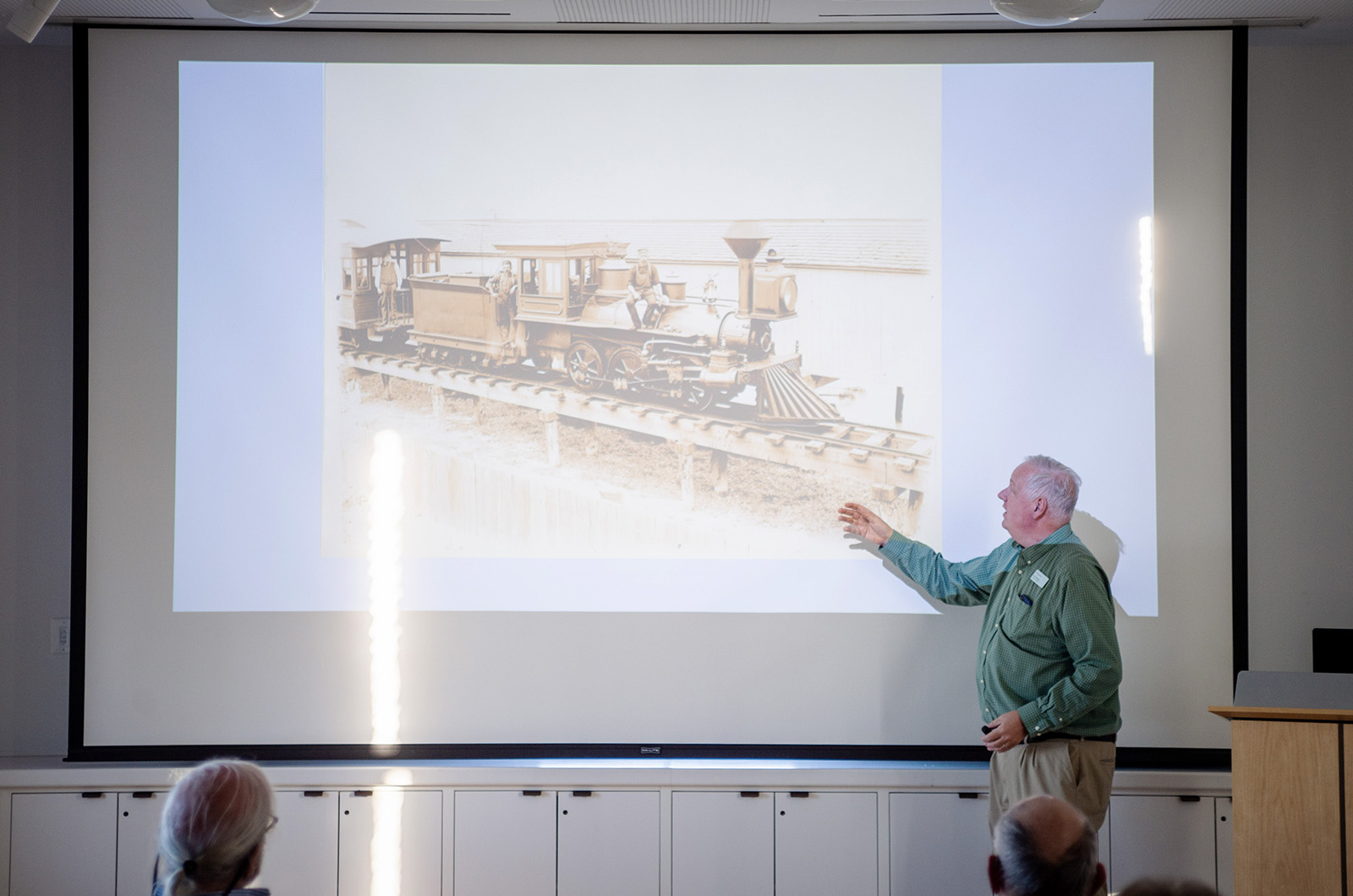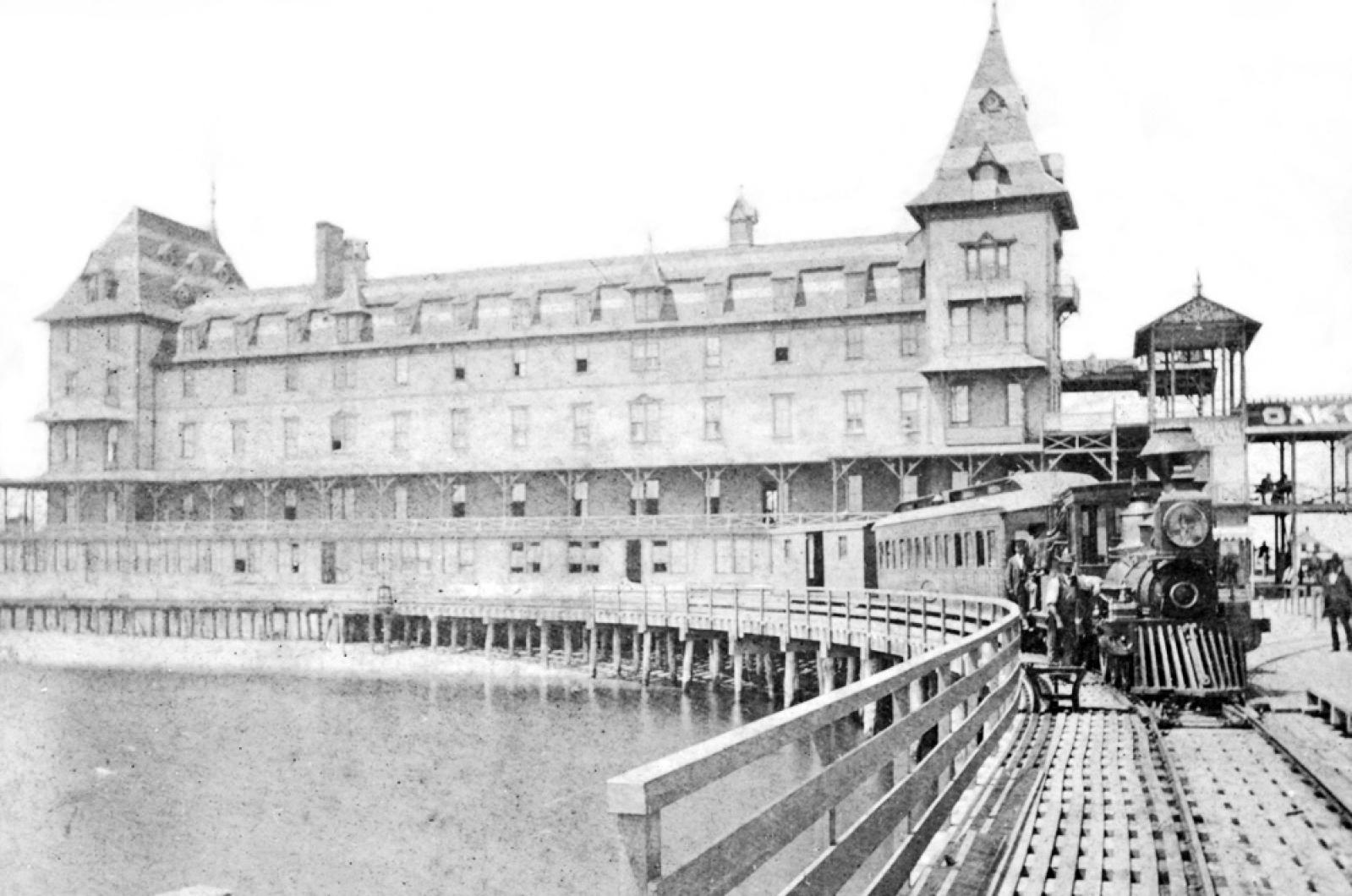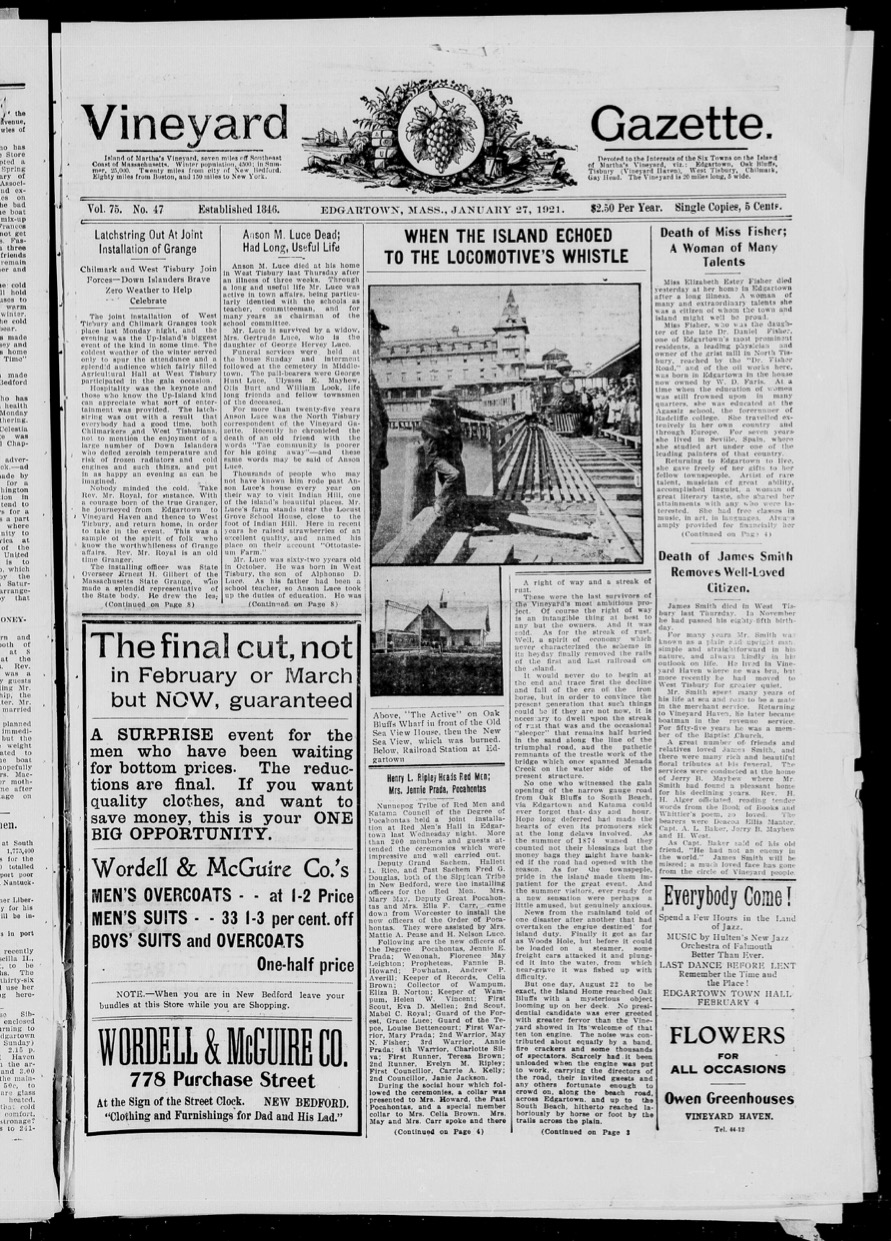Vineyarders were taken back in time on Thursday, to the late 1800s and the end of Edgartown’s whaling industry, when town leaders were trying to come up with ideas to revive the moribund Edgartown waterfront.
The plan they hatched was a new resort called Katama-By-The Sea. But to bring tourists to that far off spot, not accessible by steamship ferry, they needed another mode of travel: a train.
The tale was told by Bowdoin Van Riper, research historian at the Martha’s Vineyard Museum, where he regaled the audience with the history of the Island’s railroad in a talk entitled Spray on the Rails: The Improbable Story of the Martha’s Vineyard Railroad.

Mr. Van Riper began the lecture by explaining how the town of Oak Bluffs did not exist in the 1870s. Instead, there was northern Edgartown, what is now Oak Bluffs, and southern Edgartown, what is now Edgartown. Oak Bluffs became officially incorporated as Cottage City in 1880, and reincorporated as Oak Bluffs in 1907.
The two Edgartowns were not equal, however, in terms of economics. With the end of whaling, it was now northern Edgartown’s time to shine.
“Everything was going gangbusters,” Mr. Van Riper said of the economy in northern Edgartown, which was booming thanks to the resort development.
“Ten weeks out of the year, this podunk village was the summer playground for the rich and famous,” he said.
Southern Edgartown, however, was witnessing the end of an industry.
“Except for half a dozen die-hard lunatics, Edgartown basically got out of the whaling business.”
According to Mr. Van Riper, the value of whale oil plummeted after the Civil War and the subsequent petrol oil boom in Pennsylvania. He compared Edgartown to Pittsburgh after the steel industry pulled out.
A group of businessmen sought to re-vitalize southern Edgartown through a resort development of their own. The plan for Katama-By-The-Sea was designed by Robert Morris Copeland who also designed what would become Oak Bluffs. The plan included a wharf, places for visitors to stay, house lots and a railroad connecting Mattakeset Lodge on Katama Bay to the Oak Bluffs wharf nine miles away.
“The railroad also had the advantage of making the resort look modern,” Mr. Van Riper told the audience, explaining that trains were the height of innovation at the time.
The tracks were built over the sand, near where Beach Road runs today, because the land was cheap. The train went through what is now Westside Cemetery. Depot Market in Edgartown is named after the train depot that once stood in the area.
The railroad was designed for vacationers. There was no stop in Edgartown proper and the train only ran for the summer season.
The resort never took off, but the idea of visiting Edgartown did. Mr. Van Riper said that Katama became a popular day trip for the people arriving by steamship ferry.
The railroad ran for 24 years, but in 1892 a fire destroyed part of the track. As a result, the train spent half the time traveling in reverse. Financial troubles also swept the country in the panic of 1893 and, three years later, the train stopped running.
Mr. Van Riper acknowledged that in the history of the Island, a mere 24 years is a relative blip, and yet it is a period when Vineyarders began to look to the tourist industry for their future.
“People look at things like pictures of the train on the beach and say that would be cool, without realizing they are looking at the tip of the iceberg.”








Comments (2)
Comments
Comment policy »